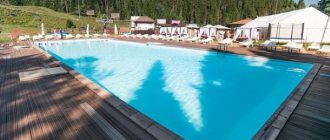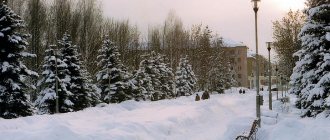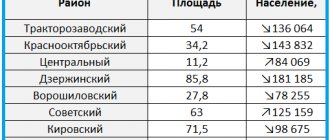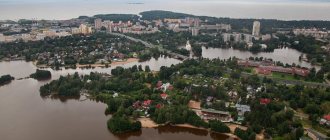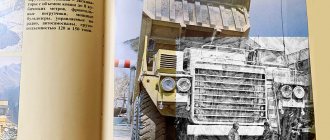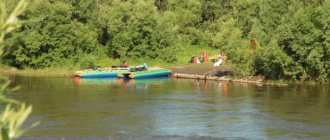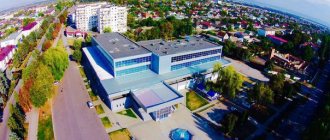Once in cozy Valencia, you will be surprised by the unexpected variety of attractions of this Spanish city. Almost every inquisitive tourist is well aware of the architectural masterpieces of pompous Madrid or democratic Barcelona. But even in comparison with these magnificent capitals, Valencia manages to amaze lovers of distant travels with its luxurious buildings, some of which are considered truly unique!
Most of Valencia's attractions are located in the old town area. Visiting them will allow you to better understand the history and modernity of this unique place in sunny Spain. A thorough sightseeing will take at least two days.
Brief information about Valencia:
| In terms of population, Valencia is the third city in Spain after Madrid and Barcelona. It is located at the mouth of the partially drained Turia River. One of the features of the attractions in the city is the mixture of cultures. At one time, various nationalities lived on the territory of modern Valencia, and this left its mark on architecture and life. The city was founded by the Romans in 138 BC. Before this, Greeks lived at the mouth of Turia. Subsequently, the city was captured and almost completely destroyed by the Lusitanians. The rebuilt city was named Valencia. The translation of this word has a double meaning. Both “Strength, Strength” and “Good Omen”. At various periods of time the city was under the rule of the Visigoths, Moors, Spaniards, and French. During the civil war of 1936-1939, Valencia was the temporary capital of Spain. |
Inexpensive transfer from Valencia airport to the city.
Find the Holy Grail
Where: Miguelete Cathedral with Bell Tower
Photo: Andrew H, CC BY 2.0
The Valencia Cathedral seems to be made up of unrelated parts. Previously, in its place there was a Visigothic church, which was converted into a mosque. Then the mosque was demolished and the building of the current cathedral was built for several centuries - it turned out to be an intricate mixture of different styles from Gothic to Baroque and Neoclassicism.
Without leaving the cathedral on the street, go to the chapel where the Holy Grail is kept - the cup from which Jesus Christ drank at his last meal. It is not known for sure whether the relic is genuine, but it makes a strong impression. While you catch your breath, admire the chapel's vault, shaped like an eight-pointed star.
To the left of the main entrance to the cathedral, climb the Miguelete Bell Tower along a narrow spiral staircase. Entrance costs 2 euros, sore muscles and the best view of the city are included.
Where to go instead of Prague and Paris: The most underrated cities in Europe
Find cheap flights to Valencia
Choose a hotel in Valencia
Hang out on the beach
Where: the beaches of Las Arenas and Malvarosa in Valencia, La Pineda and El Saller in the towns closest to Valencia
El Saler beach near Valencia
A trip to Valencia is ideally combined with a holiday at sea. There are kilometers of beaches, oh, and 300 days of sunshine a year.
You can swim comfortably in Valencia from mid-June to the end of September.
To the north of the seaport of Valencia, the city beaches of Las Arenas and Malvarosa stretch without interruption - wide, clean, well equipped. The smooth entry into the sea is suitable for children, and adults will appreciate beach volleyball, which in Spain attracts almost everyone. Malvarosa continues with Patacona Beach - it is further from the city, but calm and uncrowded.
To the south of the port are the beaches of neighboring towns, which can be reached by car in 10–20 minutes. The closest beach to Valencia, La Pineda, begins behind the current canal of the Turia River. It is adjacent to El Saler Beach with beautiful sand dunes.
Ideas for a beach holiday: Where to go to the sea without a visa
Find cheap flights to Valencia
Rent a car in Valencia
Towers of Torres de Quart
Let's start our description of the sights of Valencia with the Torres Towers. The beginning of the second half of the 15th century was marked for provincial Valencia by the completion of the construction of these famous medieval towers. Construction began in 1441 under the direction of Francesc Baldomar, Bonfill Pere and Pere Compte.
Built in Gothic style with masonry and carved stone, the towers are somewhat reminiscent of the Arc de Triomphe in Naples. It was its outline that the architects took as a basis when designing the Torres vu Quart towers.
The towers managed to survive several bloody wars, after which numerous holes remained in the fortress walls, gradually inhabited by agile birds. The buildings suffered the most damage during the French siege of 1808.
These towers attract not only the opportunity to get in touch with the past, but also the desire to admire the roofs of famous Valencian buildings. City guests rush to the observation deck of this attraction, which is open daily. Its role is played by the specially equipped roofs of two brick towers, which still amaze with their power!
| Address: | Opening hours: |
| Plaça de Santa Úrsula, close to several metro stations - Turia and Angel Guimera. | Mon.-Sat. from 9.30 to 19.00, on Sundays and holidays from 9.30 to 15.00. Ticket sales stop 20 minutes before closing. |
| Ticket prices: | Website: |
| 2 euros | musosymonumentosvalencia.com |
Take a walk along the river that doesn't exist
Where: Turia Park
The Turia River used to flow through the center of Valencia - a stroke of luck by the standards of arid Spain. But the wayward flow often overflowed its banks, and after another catastrophic flood in 1957, they decided to pacify Turia. The river was moved four kilometers to the side, and a recreation area was built in the old bed, adjacent to which is a biopark and the City of Arts and Sciences.
In the evenings, locals gather in Turia's manicured gardens to socialize, run, do yoga, ride bikes, walk with their children, or grab a bite to eat at the outdoor café. No one feels cramped.
Lavender, roses and wild rosemary: The best flower routes in the world
Find cheap flights to Valencia
Rent a car in Valencia
Zoo (Bioparc Zoo)
Created in 2008, the zoo is owned by the city but operated by a commercial zoological company. It is located along the Turia Gardens and has a modern concept of designating habitats for animals that are visited by people and not the other way around.
Instead of separating animals from people with railings and cages, they use natural terrain such as large rocks, ditches and rivers to keep them apart. African animals are the highlight of the zoo, although there are other examples from other world ecosystems.
| Address: | Ticket prices: |
| Avenida Pío Baroja, 3. Website: bioparcvalencia.es Bus: 3, 29, 67, 81, 95. Nearest metro station: Nou d'October (lines 3, 5) | Adults (13-64): 23.80 euros. Children (4-12): 18 euros. Seniors (65+): 17.50 euros. Children under 4 years old are free. |
Hotels in the area from Booking.com.
Visit a medieval stock exchange
Where: Lonja de la Seda Silk Exchange
In antiquity, silk could only be made in China. The Celestial Empire kept the secret for a long time, but silkworm larvae and production technology still leaked into the big world. Together with the conquering Moors, the art of silk weaving came to the Iberian Peninsula, including Valencia.
By the 15th century, Valencia, already free of the Moors, had become one of the most prosperous trading cities in the Mediterranean, largely due to its silk production. The building of Lonja de la Seda (“silk exchange”) was erected for merchants - a symbol of the Golden Age of Valencia.
Now the Silk Exchange is open as a museum. There is no exhibition: the seventeen-meter ceilings, gargoyles and marble floors are amazing in themselves (UNESCO confirms). To better understand medieval architectural styles, take an audio guide in Russian.
From Lhasa to Beijing: 15 places in China that you can't forget
Find cheap flights to Valencia
Choose a hotel in Valencia
Museum of Religious Art (Colegio del Patriarca)
The Colegio del Patriarca building was built between 1586 and 1610. The attraction is a striking example of Renaissance architecture. It was originally used as a seminary for training priests. The school was founded by the Archbishop of Valencia, Juan de Ribera.
Over time, the seminary buildings were repurposed into a museum. The initial collection included works of art that decorated the walls of the school.
The Capella de la Concepción displays Flemish tapestries from the 16th century. In the house of the former rector there are magnificent paintings by Dirik Booth, Rogier van der Weyden, Juan de Juanes, Francisco Ribalta, Luis de Morales and El Greco. There you will also find rare Belgian tapestries. At the Iglesia Corpus seminary, the altar is decorated with Ribalt's magnificent painting of The Last Supper.
| Address: | Opening hours: |
| Calle de la Nave 1 Website: seminariocorpuschristi.org | Monday - Friday: 11:00 to 13:30, 17:00 to 19:00. Weekends: 11:00 to 13:30. |
Ticket price: 3 euros. The ticket includes the museum, the Purisima chapel and the monastery.
Teleport to the future
Where: City of Arts and Sciences
In Valencia, founded by the Romans, there is an absolutely futuristic object - the City of Arts and Sciences. When it was built, there were many dissatisfied: it contrasts too much with the Old Town. Now this place from the future only evokes admiring sighs and the desire to take a ton of selfies.
The City of Arts and Sciences is located in the old bed of the Turia River and consists of seven starship parts: an opera house, an IMAX cinema and planetarium, a garden under a transparent gallery, a science museum, an aquarium, a single-pylon cable-stayed bridge and a competition complex. There are mixed reviews about the science museum: the exhibits can and should be touched, but the annotations are written in Spanish. But everyone likes the aquarium with huge underwater tunnels.
Time travel: 15 places on earth where the future has already arrived
Find cheap flights to Valencia
Choose a hotel in Valencia
Valencia - the union of past and future
worldaroundtrip Valencia
Valencia is one of Spain's most vibrant, forward-thinking and cosmopolitan metropolises. It is the country's third largest city, with a rich historical heritage, culture and excellent nightlife, worthy of rivaling the best cities in Europe.
Located close to the resorts of the Costa Blanca and the capital Madrid, Valencia has become one of the most fashionable tourist destinations in Spain, in great demand among European travelers. Dubbed "the new Barcelona" in recent years, Valencia has shouldered the heavy burden of expectations for something big. However, the city is brave, beautiful and confident enough to withstand the pressure.
During the civil war, it was the last place of resistance of the Popular Front before the dictatorship of Francisco Franco. Today, Valencia represents the essence of modern Spain - a very conservative city, proud of its traditions, but at the same time full of bold architecture and experimental cuisine. By the way, translated from Latin, Valencia means “brave.” This is what the Roman consul called this fortified city in ancient times. Although Valencia lies on the Mediterranean coast, its history and geography have always been largely linked to the Turia River and the fertile orchards that surround it.
Transport connection
The main bus company in Valencia is called EMT. It operates regular flights around the city from 06.30 to 22.30. There is also a night bus service from Plaza de Ayuntamiento, which operates from Thursday to Saturday from 23.00 to 03.00. In addition, you can easily get around the city by taxi or rent a car, but to do this you must be at least 21 years old and have an international driving license.
The Valencia metro is more suitable for locals than tourists, as it serves residential and suburban areas. And yet there are some lines connecting the airport with the city center (lines 3 and 5), the port (line 5) and Malvarossa beach (line 4, which is essentially a tram).
Reusable tickets and passes can be purchased for a day or even a month, and can be used on all transport networks in the city, including the airport-city center route. And if you purchase a Valencia tourist card, you will be able to use public transport for free or at a discount, but also visit the main museums and art galleries, rent a municipal bicycle, make profitable purchases, receive discounts in restaurants and cafes in the city and much more.
Interesting sights of Valencia
Valencia's rich past has left behind a remarkable cultural heritage in the form of architectural and historical monuments. Therefore, of course, many begin their sightseeing tour from the Old Town, where the “silk exchange” of Lonja de la Seda, the Cathedral with the Holy Grail, the Torres de Serrano Gate and the Square of the Holy Virgin are located. However, the present has also done a good job and manifested itself in some wonders of modern architecture. This is how the City of Arts and Sciences appeared - a neo-futuristic entertainment, cultural and architectural complex with an IMAX cinema, planetarium, science and technology museum, opera house and much more. The oceanarium of the L'Oceanogràfic complex is the largest in Europe. Another interesting creation is the Institute of Contemporary Art, which, both inside and out, fully lives up to its name.
In addition to urban wonders, Valencia gives tourists “islands” of nature. So, be sure to visit the beautiful Gardens of Turia, which were laid out on the site of the former mouth of the river of the same name. In the middle of the last century, the government decided to move it due to constant floods. Also, not many people know, but Valencia has a wonderful Bioparc - a zoo as close as possible to the natural habitat of animals. Here, lions, giraffes, elephants, gorillas and many other representatives of the animal kingdom roam freely through savannas, rain forests and swamps. The city also has a charming Botanical Garden with a huge variety of vegetation. The garden is decorated with sculptures, decorative fountains and cozy gazebos, but its main interest is the 50 cats and kittens that live here and are cared for by local volunteers. These cute creatures will make a visit to the Botanical Garden truly unforgettable.
Oddly enough, another interesting attraction of Valencia is the train station. This place is really worth seeing. The amazing facade of the building mixes different Art Nouveau elements, and the people here are dressed in traditional clothes. The station lobby still retains the old wooden ticket booths, the columns are decorated with orange moldings, and the windows are stained glass designs.
Also as a port city, Valencia has a very nice marina. This is a wonderful walking area where you can admire the variety of sea vessels. Here, both small wooden boats and giant cruise ships rock on the waves.
Oceanographic Park
The largest oceanographic park in Europe is a unique opportunity to get acquainted with the inhabitants of the deep sea from the tropics to the Arctic. The huge pools and enclosures are home to more than 40,000 animals, which can be observed at arm's length, and the vegetation and original architecture perfectly complement the wildlife.
Biopark
The Valencian Biopark is a unique institution that is designed to protect endangered species from extermination. It recreates all the conditions for the inhabitants, and they feel at home here. Guests are provided with all the conditions for observing animals in their natural environment.
Lonja de la Seda
A masterpiece of Valencian Gothic architecture, built in the 16th century, it offers visitors a glimpse of the grandeur and grace of medieval architecture. Its sweeping halls have retained their original appearance, and the slightly yellowish façade, decorated with bas-relief, stands out noticeably against the backdrop of the old quarters.
Valencia in museums
One of Valencia's assets is its stunning and varied museums. Not visiting them here means underestimating the city.
Museum of Fine Arts
The most outstanding of all is the Museum of Fine Arts. This is the largest art museum in Spain after the Prado Museum in Madrid. It houses ancient and modern galleries showcasing the works of Spain's greatest painters, including El Greco, Velazquez, Murillo and Goya. The museum also houses an impressive collection of sculptures and archaeological finds.
Prince Felipe Science Museum
Stretching out like a giant whale skeleton in the middle of the City of Arts and Sciences, this interactive science and technology museum has lots of cool exhibits for kids to touch, as well as machinery and displays for all ages. The themed areas of the museum teach some advanced science in a rather fun way.
Historical Museum of Valencia
The Historical Museum of Valencia presents the city's 2,000-year history. Each period is depicted in a separate glass case, so exploring the museum is like walking through a shopping mall. A special atmosphere is created by the fact that the museum is located in the city reservoir of the 19th century. Even those who are not into history will definitely enjoy this museum.
Museum of Ethnology of Valencia
The main exhibition of the Museum of Ethnology of Valencia focuses on the ethnic and cultural diversity of this Spanish province, according to which the museum's collection consists of three permanent exhibitions that are dedicated to agriculture, urbanization and nature of Valencia.
National Ceramics Museum
In one of the ancient palaces of the city called Palazzo del Marques de Dos Avgas, the National Museum of Ceramics is located, the luxurious main entrance of which is decorated with alabaster compositions with the figure of the Madonna.
Also in Valencia there is the Museum of Prehistory, the House Museum of the writer Vincente Blasco Ibáñez, the Patriarchal Art Museum and the Rice Museum.
Shopping tour of Valencia
Valencia offers a wealth of shopping opportunities, from modern high street fashion to antiques and classic tourist souvenirs. The city's main shopping street is Carrer de Colon and its alleys filled with small boutiques and high fashion houses. For high-end shopping, head to Carrer de Poeta Querol for its myriad of designer shops. Those looking for vintage souvenirs, such as bullfighting posters or vintage postcards, can find them in Plaza Merced. The most famous store in Valencia is the El Corte Ingles shopping center, part of a national retail chain.
Valencia also has charming markets. Mercado Central, which is located in the historic center of the city, has more than 1,000 stalls selling local products. This is the best place to buy jamon and cheese. And every Sunday, the largest flea market takes place on Plaza Luis Casanova, where you can really find something worthwhile. Animal lovers will definitely enjoy the Sunday market in Plaza Redonda, where birds and pets are sold. And on Thursdays, at the Cabanyal market you can get good deals on clothes and accessories.
Night life
After sunset, Valencia is even more impressive. The scene is the narrow streets of Barrio del Carmen. Don't expect the fun to start early, however, as it only picks up pace around midnight. Other popular nightlife spots include Avenida d'Arago, Plaza de Canovas and the university area of Avenida Blasco Ibáñez. In summer, Paseo Neptuno beach and the new port are very lively and attract the city's most fashionable people.
The Urban Cafe bar is famous for its comedy shows and themed parties. This is a great place to start your evening with a wonderful dinner and drinks. In addition, wine tastings are regularly held here, and cocktail making master classes are given. You will find a musical “cocktail” in the ultra-fashionable club Las Ánimas Puerto overlooking the beach and ocean. On the club's numerous dance floors you can dance to R&B, house, electronic music and even retro music from the 70s and 80s. For student parties and live pop music, head to MurrayClub 33rpm, while the spacious and atmospheric Radio City acts as not only a nightclub, but also a venue for theatre, flamenco shows and creative competitions. And in order not to miss the latest and interesting musical life, visit such establishments as Cafe del Duende, Loco Club and Wah Wah Club.
Local kitchen. What is it famous for and where can you try it?
Valencia's culinary scene has an excellent reputation. With plenty of seafood restaurants and classic tapas spots, this city is a great place to celebrate your belly. In addition, Valencia is the birthplace of the famous paella - a Spanish dish whose main ingredients are rice and saffron. Vegetables, seafood, chicken, rabbit and even sausage are also usually added to paella. This national dish is served in almost all establishments in Valencia - from expensive restaurants to street eateries.
For high-end cuisine, head to the Submarino restaurant at the L'Oceanogràfic aquarium. Being here “underwater”, surrounded by 10,000 fish, you can taste exquisite seafood, traditional Valencian dishes and international cuisine. Also among the high-quality establishments are the Ricard Camarena and Riff restaurants. The Seu Xerea restaurant, which serves both European and Asian cuisine, belongs to the middle price category. And the most original establishment with Mediterranean cuisine is the Quintana restaurant. For inexpensive home-cooked meals in between sightseeing, you can try the Vintara tavern, the Casa Mundo diner (whose most popular dish is squid sandwiches), and the old Spanish restaurant Casa Montaña, which serves wonderful traditional tapas and was once a favorite intellectuals, politicians and artists gather.
As for drinks, everywhere on the streets of Valencia you can find stalls with horchata - the famous Valencian drink made from ground almonds, sesame seeds, rice, barley or chufa nodules. People love horchata and drink it with or without ice.
What awaits in the suburbs?
Located 10 kilometers south of Valencia, the picturesque Albufera Natural Park preserves Spain's largest lake. This lake is surrounded by a fragrant pine forest, which attracts migratory birds for the winter. Local restaurants serve wonderful traditional seafood dishes.
An hour's drive from the center of Valencia lies the small town of Benicassim, best known for its annual summer music festival. And away from this “ever-night” festival fun, Benicassim offers a stroll through its marvelous surroundings, as well as viewing some cultural attractions.
On the way to Benicasim you can stop by the medieval town of Castellon de la Plana, interesting for its many museums, historical buildings and gastronomic delights. The main attractions here are St. Mary's Cathedral, the Museum of Ethnology, the Bishop's Palace and the 16th century El Fardi Tower. Thanks to its coastal location and surrounding mountains, the range of activities in Castellon de la Plana ranges from fishing and diving to hiking and mountain biking.
On the other side, also an hour's drive from Valencia, lies the city of Alcoy, famous for its three-day colorful "Moors and Christians" festival in April. This town is especially beautiful and fragrant during the citrus blossom season.
If we talk about the very close surroundings of Valencia, then you can go for one day to Port Saplaya - the Spanish “Venice”. The city is crisscrossed with canals where local residents' boats are moored. It’s also worth visiting the Sagunto fortress, perched high on a hill; it offers a magnificent panorama of the town of the same name.
Holidays and festivals in Valencia
Valencia, like the whole of Spain, widely celebrates the Fiesta de San Juan - an analogue of the Slavic Ivan Kupala. It is celebrated on June 23. On this longest day of the year, the beach is dotted with bonfires and the sky is lit up with magnificent fireworks. With such “artificial” lights, residents return to the sun the energy that it loses during the summer solstice.
Also, every city in Spain has its own annual fair. Such fairs are colorful carnivals with feasting and dancing. In Valencia, the celebration lasts throughout July and spreads throughout the city, with cultural events and artistic performances taking place. The highlights of the Valencian festival are the Battle of the Flowers (last Sunday of the month), the International Band Competition (first two weeks), bullfighting (second and third weeks) and the Spanish operetta zarzuela.
Perhaps Spain's most famous and craziest festival is La Tomatina, a chaotic tomato fight that takes place in August in the town of Buñol, near Valencia. Thousands of people travel from all over Spain to Buñol to take part in this major food battle. The holiday begins with a competition in which daredevils strive to climb the slippery pole to get the jamon at the top. Then the battle itself begins, lasting an hour. By the end of it, the town square and buildings turn red, and rivers of tomato juice flow through the streets. It is better to take care of housing during the festival in advance, as there is a risk of staying overnight on the street.
Another exciting traditional festival in Spain is the Fallas, a festival of fire celebrated in the Valencian Community. Unusual giant figures and puppets made of wood and papier-mâché parade throughout the city throughout the week. On the last day of the festival, these giant figures are set on fire, illuminating the city. The festival usually takes a full year of preparation, with participants donning their best traditional costumes to parade through the city streets. This is a special event in Valencia, so if you come here in March, do not miss it!
What to do in Valencia?
- Get lost in the atmospheric streets of the Old Town
- Spend a day exploring the City of Arts and Sciences
- Take a tour of the Lladro ceramics factory and buy something as a souvenir in a local shop
- Try all types of paella
- Take a pottery class
- Explore the Turia Gardens by bike
- Visit the bullring (maybe you'll get to see the show itself)
- Go on a picnic to the banks of the Turia River
Where to go with children?
If you are traveling to Valencia with children, then rest assured that there will be a place for them there too. Take Biopark, which was already mentioned above. Children simply cannot help but like all these elephants, monkeys, giraffes, zebras, lions and other animals, especially since they, one might say, roam free. There are certain hours when you can even feed the zoo's inhabitants.
Valencia also has many parks and gardens where you can have a good time with your children. For example, they can imagine themselves as Lilliputians in the Gulliver playground at Turia Gardens. A giant figure of Gulliver lies tied up on the ground, and inside it there are various slides and labyrinths.
The City of Arts and Sciences is practically one big playground. For little children, there is plenty of fun here with a fantastic aquarium, a cinema, and a fascinating museum. By the way, restless people will definitely appreciate the educational lectures read here for being fascinating and accessible.
They will also enjoy the curious Fallas Museum, dedicated to the famous Spanish holiday. It's a fun place with over a hundred doll figures that have escaped fire and accumulated in the museum over the last century. Children will see here the process of making a figure using the papier-mâché technique.
And, of course, the beach! All children love the beach, and in Valencia it is a huge area of soft, warm sand with a large number of playgrounds. A child will be able to build an entire city out of sand, look at the underwater inhabitants with a snorkeling tube, or simply splash around in the waves of the gentle sea.
Resort Valencia
For all this medieval and futuristic beauty, you might forget that Valencia is a wonderful resort on the Mediterranean coast, and as part of the famous Costa Blanca, it has amazing urban and country beaches. At any time of the year, you can find the beaches of Arenas and Malvarossa just a few minutes from the center of Valencia. They can be reached by shuttle bus, tram or taxi. And why not just walk or bike there? Useful and pleasant.
Both beaches are comfortable and a great place for sunbathing, swimming in the refreshing waters of the sea, diving, playing volleyball, jet skiing, rollerblading along the boardwalk, enjoying the local delicious ice cream or admiring the billowing sails - just to name a few of the beach activities in Valencia. In addition, you can try drinks in one of the trendy bars, and after sunset, dance until the morning in exciting clubs. Beach restaurants with stunning sea views will feed you the best seafood and paella, and you can relax with a spa session at one of the coastal hotels.
In addition, Valencia's wild, pristine beaches lie just 10 kilometers from the city, surrounded by dunes and dense vegetation. These beaches include El Saler Beach and Albufeira Natural Park Beach. This is a great opportunity to retire away from the tourist crowds.
Useful contacts
When traveling around the world, you feel much more confident armed with useful phone numbers and addresses.
Russian Embassy in Madrid:
Address: c. Velasquez, 155, Madrid, 28002 Phone: 91-562-22-64, 91-563-71-92 (24 hours)
Help numbers
Tourist information telephone TURESPANA - 901-300-600 Telephone information service for Spain - 003 Information about bus movements, on-duty pharmacies, etc. – 098
As elsewhere in Valencia, short numbers for emergency calls work:
- Rescue Service – 112
- National Police – 091
- Ambulance – 061
- Fire protection – 085
Once upon a time, a very, very long time ago, the Moors called Valencia “paradise on earth.” And they were right. If you choose Valencia among all the European resorts, then rest assured that here you will experience the real Spain - the most concentrated and spirited. The whole city is saturated with its hot traditions, so no matter what type of vacation you prefer, your trip will be remembered by you for a very, very long time!
Listen to the carillon
Where: Valencia Town Hall
You won't confuse Plaza Ayuntamiento with anything else: the Valencian City Hall is one of the most prominent buildings in the city. Previously, there was a college on this site, then it moved, and the city council was housed in the building. To give the new town hall a solid appearance, an elegantly decorated façade was added to it.
The central tower of the town hall was decorated with a clock and a carillon - a musical instrument in which more than twenty bells are controlled from a keyboard. Take this opportunity: the carillon is a rare thing, and in Valencia it plays every hour.
By the way, the expression “raspberry ringing” has nothing to do with raspberries: it is associated with the carillon in Mechelen, Belgium.
From 8:30 to 14:00 from Monday to Friday, don't miss the chance to go inside the Valencian City Hall. Climb the marble staircase, look at the stained glass windows, bas-reliefs and huge crystal chandeliers and be sure to go out onto the balcony from which the mayor addresses the city residents.
To Europe for the weekend: 12 fun routes
Find cheap flights to Valencia
Rent a car in Valencia
When is the best time to go to Valencia?
Valencia has a Mediterranean climate with hot, dry summers and mild, wet winters, which by our standards are more like spring.
To explore the sights, it is best to come to Valencia in March–May and September–October: you will avoid the heat, crowds of tourists and high housing prices.
The swimming season in Valencia begins in June and lasts until the end of September. In May the sea is still a little cold, although there are many who like to cool off.
In winter in Valencia there are strong chilly winds from the sea: look for accommodation with air conditioning for heating, and take a jacket and hat with you.
Take part in a water court
Where and when: Thursdays at 12:00 at the Cathedral
In order for grapes, beans, oranges and olive trees to grow better, irrigation canals were laid in Valencia back in the Middle Ages, which are still in use today. Since then, the Water Tribunal has been preserved - a court that resolves controversial issues on canals and water distribution.
Every Thursday at noon, representatives of all nine irrigation canals sit in a circle on chairs near the Cathedral. Farmers state their cases: someone wants to dig a temporary canal to irrigate a distant field, another is dissatisfied that a neighbor is not cleaning his plot well and the water is flowing slowly - the tribunal considers all cases and makes decisions. Spectators with smartphones crowd around, but the judges are not bothered by such trifles.
The law is not written: Unusual traditions and superstitions from around the world
Find cheap flights to Valencia
Choose a hotel in Valencia
Slip into a house a meter wide
Where: Lope de Vega Square, building 6
In Valencia, look carefully around so as not to miss the 107 cm wide La Estrecha house. The Spaniards claim that this is the narrowest house in Europe. In fact, the record holder with a width of 92 cm is located in Warsaw. But plus or minus fifteen centimeters does not change the impression of a facade that you can wrap your arms around entirely.
Useful: How to price tickets on Skyscanner
Find cheap flights to Valencia
Rent a car in Valencia
Look at the palace
Where: González Martí Ceramics Museum in the Palace of the Marquises of Dos Aguas
You can look at the luxurious Palace of the Marquises of Dos Aguas for hours.
In the 15th century it was an unremarkable house of a famous merchant family. A noble don married the daughter of a merchant, and their descendants received the double surname Rabassa de Perellos. Then the family bought the baronial title of Dos Aguas, and two centuries later received the title of marquis.
To emphasize their position, the newly minted Marquises of Dos Aguas turned the house into a palace - one of the masterpieces of the Spanish Baroque. Particularly captivating is the dramatic composition above the entrance: the mighty Atlanteans are an allegory of two local rivers, Turia and Jucar, and the Dos Aguas family.
After admiring the palace, do not forget to go inside. Hidden there is the González Martí Ceramics Museum, where elegant figurines, frescoes, ceramic tiles, a real carriage and interiors in the rooms of the Marquis await you.
Herding elephants, drawing with henna and forging: Where to learn the unusual
Find cheap flights to Valencia
Choose a hotel in Valencia
Enjoy Horchata
Where: Orchateria Santa Catalina (Plaza Catalina, 6)
Paella in Valencian style - of course. Where else can you try a hearty rice dish with rabbit, chicken, beans and snails if not in its homeland? But in Valencia there is another delicacy that is less conspicuous.
Horchata is a Valencian drink made from ground chufa nodules mixed with water and sugar. Tastes similar to nut milk. The best place to order horchata for the first time is in the historic Santa Catalina horchateria. To complete the experience, take a long farton bun and dip it into a glass of cold horchata.
Start the day like the locals: What they have for breakfast in different countries
Find cheap flights to Valencia
Rent a car in Valencia
Church of St Thomas and St Philip
The building, with its dazzling blue-tiled dome, exemplifies the typical Mediterranean style of Valencia. Iglesia de Santo Tomás y San Felipe Neri was built in 1725. In 1982 it was given the status of a National Historic Monument. It is worth paying attention to the original, intricately designed, baroque façade and architectural layout. By the way, the layout was almost 100% copied from the Church of Il Gesu in Rome.
The spectacular interior features a spacious central nave lined with numerous chapels. Catholic mass is celebrated in the church daily. The attraction is closed to the public, but tourists can attend mass to see the beautiful sanctuary.
Address: Plaza de San Vicente Ferrer.
Spy on a giraffe
Where: Biopark Valencia
No dull cages, cloudy glass or electric fences - Valencia Biopark is not like an ordinary zoo. Groomed lions, hippos and giraffes stroll through landscapes similar to their natural environment. Animals are separated from visitors by ponds, stone slides and waterfalls - as if this is a nature reserve and not a park in the city. Harmless lemurs go wherever they want.
Biopark is open from 10:00 to 21:00. It is better to come in the morning or late afternoon, when the animals are most active.
From Vienna to Singapore: 10 of the most unusual zoos in the world
Find cheap flights to Valencia
Choose a hotel in Valencia
To save money in Valencia, buy the Valencia Card.
It includes free travel on public transport, including from the airport, free or discounted museums and entertainment, and discounts at restaurants and shops.
Valencia Card for 24 hours costs 15 €, for 48 hours - 20 € and for 72 hours - 25 €. If you pay online and pick up at the tourist office, it will be 10% cheaper.
How to get to Valencia
There are several ways to get to Valencia:
- by plane. Direct flights and Air Europe depart from Moscow to Valencia. Travel time will take 4 hours 50 minutes. There are no direct flights from St. Petersburg. You need to change planes in Moscow or in European cities: Prague, Frankfurt am Main, Barcelona, Zurich, Munich or Dusseldorf. For people living in other cities of Russia, Aeroflot offers very favorable flight rates to Valencia with a transfer to Sheremetyevo;
- by train. Getting to Valencia by train from Moscow or St. Petersburg is very difficult and expensive. It will be necessary to make many transfers (for example, from the Moscow-Paris train to the Paris-Barcelona train). But from neighboring Spanish cities it is quite possible to get to Valencia by rail. The most convenient way is from Madrid (1.5–2 hours on the road) or Barcelona (3–4 hours on the road);
- by bus. The route from Moscow by bus will take about 48 hours with transfers in Minsk, Rivne and Barcelona. But from almost any city in Spain it is very easy to get to Valencia by bus. From Barcelona and Madrid the trip takes 4 hours;
- by water transport. Valencia has a seaport that, in addition to cargo ships, receives ferries and cruise ships. Ferries run almost daily from Valencia and back to the islands of Palma de Mallorca and Ibiza.
The most convenient way to get to Valencia is by plane
Become a fire worshiper
Where and when: March 15–19 throughout Valencia
Every year from March 15 to 19, the Fallas festival, the local Maslenitsa, rages in Valencia.
Fallas comes from the Middle Ages. Every spring, Valencian carpenters burned candle stands that were no longer needed during the long daylight hours. Gradually, wooden boards began to be dressed up in clothes, and the holiday acquired a Christian meaning - it was dedicated to Joseph the Carpenter, the husband of the Virgin Mary. At different times, the figures were made of wood, wax, cardboard and papier-mâché, and the plots became more complex. Nowadays they mostly use polystyrene, which produces realistic giants from half a meter to five floors high.
During the days of the Fallas, from morning until late at night, the whole city walks in the streets, orchestras play, firecrackers explode and the smell of gunpowder does not disappear. Girls dressed in lush national dresses offer millions of flowers to the Holy Virgin, protector of the outcasts and patroness of Valencia. Huge dolls stand everywhere - exactly until the moment the lights come on and all the masterpieces burn in one night, except for one chosen by the audience.
Bullfighting and tomato fight: All holidays and festivals in Spain
Find cheap flights to Valencia
Choose a hotel in Valencia
Where to live
Photo: Hotel Villacarlos
For sightseeing and walking, we recommend choosing a hotel closer to the historical center.
Top 5 best in terms of price/quality ratio for a budget holiday:
- Hospederia del Pilar (Plaza Mercado 19) is a modest hotel in the heart of the city. Suitable for young people, as the bar and club street is a 7-minute walk away.
- Hotel Villacarlos (Avenida Puerto 60) is a comfortable and inexpensive hotel with delicious breakfasts.
- Sweet Hotel Continental (Calle Correos
 – cozy hotel with clean rooms. Buffet breakfast.
– cozy hotel with clean rooms. Buffet breakfast. - Hotel Kramer (Avenida Campanar 90) is a good place near Bioparc Valencia. Nearby metro station.
- Hotel Adhoc Carmen (Calle Samaniego 20) is an original and authentic hotel with two-story rooms in the heart of the city.
For a large family or group of friends, it is more profitable to book an apartment. In Valencia you can find excellent housing options from 45 euros per night for the entire apartment.
Learn everything about porcelain
Where: Lladro porcelain factory, Ctra. de Alboraya Polígono Lladró
If the words “porcelain figurine” bring to mind unsightly pioneers and Olympic bears, go to the Lladro factory in the suburbs of Valencia. The products of the famous porcelain factory are in the Hermitage - and when you see this quintessence of tenderness and grace, you will understand: it is deserved.
In addition to the showroom, visit the production facility and see what painstaking work goes into creating one porcelain senorita. The Llardo factory offers free group tours in Russian; you just need to sign up in advance on the website.
Down with magnets! Really cool travel souvenirs
Find cheap flights to Valencia
Rent a car in Valencia

